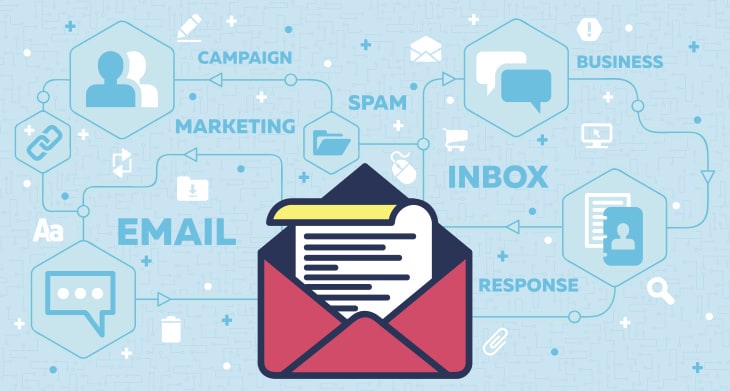Your email list, no matter how big or small, is where the money is hiding in your business.
Think about it:
If you’ve grown your list the right way––meaning your subscribers opted in on their own accord––you have the direct contact information for an entire list of people who have expressed interest in what you have to offer.
All email copywriters will tell you: If you’re not utilizing your email list, you’re leaving money on the table. Period.
But email lists need to be nurtured; you can’t just send out emails asking people to buy, buy, buy, unless you want them to start ignoring you altogether or even worse, mark you as SPAM.
There’s a better way to ramp up your open rates, increase your click-through rates, and grow your business.
Understanding Deliverability
Before you start writing your email copywriting frenzy, you need to have at least a baseline understanding of email deliverability.
Email deliverability is how likely it is that your emails will make it into the inbox of your subscribers.
While there are numerous factors that determine deliverability (and they’re nuanced), get familiar with the following:
- Text to code ratio: You need more text than code in your emails (this includes images)
- Send from the domain you’re directing people to (as in, if you’re sending emails from [email protected], the links in your emails need to direct back to yourwebsite.com
- Authenticate your domain. This can be done through the backend of your email service provider.
- Be careful with copy! Avoid “SPAMMY’ language like “SALE!!” “MILLION DOLLARS!!” or other phrases you’d commonly see in SPAM emails.
Once you’re at least baseline familiar with deliverability, you can start writing your emails.
The 4E Method: A Copywriting Method for High-Performing Email Sequences
Let me introduce you to my 4E Email Copywriting Method. This direct response copywriting method ditches the buy, buy, buy tactic that so many business owners fall back on, and use a give, give, give, ask pattern.
The give, give, give, ask pattern is powerful because if you’re offering your email subscribers something of value instead of asking them for something every email, you condition your audience to recognize that every time they open their email, it’s going to be worth it to them.
Then, when it comes time to buy, they know, like, and trust you, which is essential in converting your audience into buyers.
Let’s break down the 4E email copywriting method piece-by-piece:
Educate
An educational email gives your audience a better understanding of something, teaches them how to do something, or lets them in on insider information. This type of email is not meant to sell anything, but to provide your audience with useful information.
Your call to action in this email could be to download an ebook, watch a video, or even read a blog on your site.
Entertain
Entertainment emails are for just that: entertainment.
To keep your audience entertained, you could send out emails that share anecdotes related to your business, niche-related “meme roundups,” or (light) industry news for that week.
Again, this email isn’t meant to sell.
Engage
Of the 4Es, this email type opens up the floor for conversation and community building. An engagement email could pose a question or invite your subscribers to join a Facebook group.
Even just letting your subscribers know that they can always reach you by hitting “reply” on your email can keep your audience engaged.
Entice/Exclusivity
The “entice” email is the sales email. This email is the “ask” of the give, give, give, ask pattern. This is where you push an offer, and send out a special deal.
In your entice email, you want to be confident in your messaging, be clear on your offer, and any end dates, and if possible, include something in the offer that is ONLY available to your subscribers. With your subscribers, exclusivity is key.
Only Use the 4th E When You’re Ready!
There’s no “foolproof” method of warming up your audience to purchase, but the rule of thumb is this: don’t push for a sale until you feel like your audience is ready to buy.
Ask yourself these questions:
- Have you provided enough value?
- Has your audience gotten to know you/your business well enough that they know, like, and trust you?
- Is your offer attractive (this one is important. No matter how good your copy is, if your offer isn’t a “so good you’d feel dumb saying no, keep working on it)?
Remember, you can categorize your subscribers by tags, including those who have yet to purchase and those who have made a purchase that you are hoping to be returning customers. You can personalize each sequence as necessary.
Your Email List is Worth Its Digital Weight in Gold
Your email subscribers are on your list for a reason: because they’re interested in what you have to offer. Sometimes, they’re just waiting for the right email to come along to encourage them to make a purchase.
- 10GbVPS Review – Review Their VPS Hosting Services (2024) - June 1, 2024
- BlueServers Review – Unbiased Look at Their Dedicated Hosting Services (2024) - June 1, 2024
- 10 Best Programming Languages For Web Development - February 27, 2024

